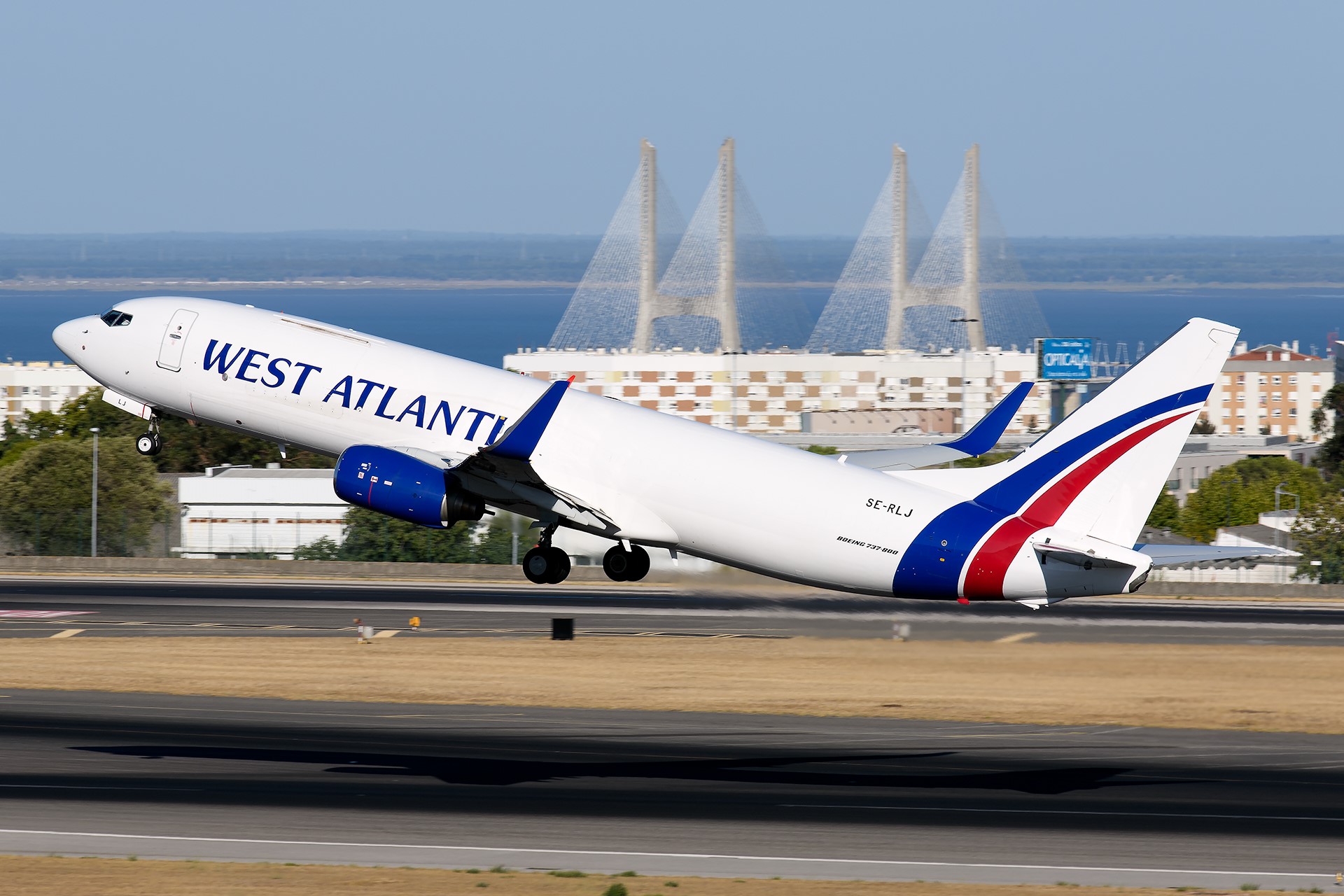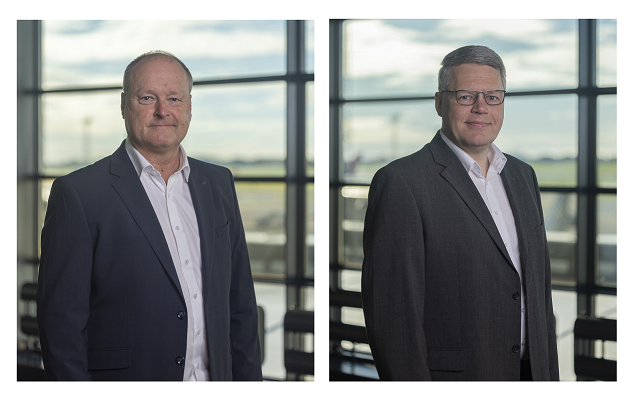Overcoming challenges in the Nordic region
05 / 01 / 2024

Source: West Atlantic
The Nordic region’s current airfreight market remains testing for its air cargo gateways, its freight carriers and the various other elements of its air-related supply chains.
For many of these companies, tonnages are significantly down on the heights of the Covid pandemic period while others have not recovered to pre-pandemic levels. However, the industry is rising to the challenge.
Denmark’s biggest and busiest airfreight gateway, Copenhagen Airport, for instance, saw its airfreight volumes down 20% on pre-Covid levels when comparing traffic figures for the first nine months of 2023 to the same period of 2019.
The airport acts as an important hub for cargo flying into and out of the wider Scandinavian region, as well as for freight moving into and out of Denmark.
It offers short transfer times and a comprehensive trucking network links Sweden, Norway and even Germany, Poland, the Netherlands and the Baltic States.
It also offers well-balanced import and export traffic and well-developed infrastructure.
Alongside integrator traffic, most of its air cargo is carried in the bellyholds of widebody passenger services, but this lower deck capacity is supplemented by the maindeck space of freighter services operated by legacy carriers such as Ethiopian Cargo and Lufthansa Cargo.
Right now, Copenhagen has an average of 20-22 daily services operated by pure freighters, mostly operated by its integrator visitors.
Approximately 32% of the air cargo flying through the airport moves on the integrators’ networks.
According to senior air cargo manager Lars Gotfredsen, the airport is keen to up its cargo throughout and has “great interest” in opening up more routes into certain markets, especially in China and elsewhere in Asia.
“Copenhagen Airport considers the whole of Scandinavia to be our catchment area, but also the Baltic, the northern part of Germany and Poland are countries who contribute to some of our transit cargo, both import and export goods,” Gotfredsen reports.
The region of northeastern Denmark/southwestern Sweden – within two hours’ drive, very much the heart of the airport’s catchment area – is sometimes described as ‘Medicon Valley’.
It’s important to note that southern Sweden is further from Stockholm and the nation’s major air cargo gateway at Arlanda than Copenhagen, points out Michael Giese, another senior air cargo manager at the airport.

Lars Gotfredsen and Michael Giese. Source: Copenhagen Airport
By weight, basic industrial raw materials as well as consumables for various industries and processed foodstuffs and beverages for human consumption represent the largest of Copenhagen’s flown air product groups.
Machinery parts and components (such as for the automotive and aviation sectors) as well as fresh fish are also important commodities for the gateway’s exports.
“We have a considerable amount of fresh Norwegian salmon in transit here through Copenhagen. Most of this is driven down on refrigerated trucks from Norway. Plus, UNICEF [the United Nations Children’s Fund] has its HQ in Copenhagen, which also means a lot of emergency aid/relief out to the wider world. Right now, it’s unfortunately a very urgent commodity mix, with more natural disasters and wars.”
In terms of imports, fashion goods, machinery parts and components and raw materials play important roles, Gotfredsen also observes.
Copenhagen’s air cargo volumes can be broken down approximately as follows: 15% consists of imports for Denmark and 22% is export traffic out of Denmark, while 63% of airfreight is moving in transit to/from the rest of the Nordic region.
Positive signs
Danish exports have generally performed very well post-Covid, Gotfredsen says, buoyed by the strong life science industry in the region.
It’s difficult to attribute the decline in the airport’s overall tonnages compared to pre-pandemic levels to just one thing, but the closure of Russian airspace is “clearly one of the reasons”, Gotfredsen suggests.
As the area’s airspace now has to be avoided, travel times to Asia have been adversely affected and a number of European carriers have cut back on services and frequencies to the continent.
“We are close to having re-established most of the westbound long-haul traffic while we still lack part of the previous capacity for China and Japan,” he reveals.
It’s by no means all bad news, though. As well as the strong demand for life science products flying from Denmark and Sweden, Norwegian salmon is still the largest air cargo export commodity for the Nordic region, accounting for more than a third of all tonnages, and Copenhagen Airport is hopeful of attracting more of this airfreight.
Meanwhile, e-commerce declined in Denmark during 2023, but is still expected to grow in the future, Gotfredsen says.
And Giese also notes that there is an active imbalance in e-commerce traffic through Copenhagen, with significantly more inbound volumes than outbound ones, something else that can be actively addressed.
The airport has plans to develop the cargo area at the eastern end of the airport and is looking to grow in all three cargo segments – belly cargo, integrator and pure cargo aircraft volumes.
“Our ambition is to remain the Northern Europe gateway for airfreight,” Gotfredsen confirms, adding that the recent news of Air France-KLM taking a significant share in regional flagship carrier SAS may also indicate a possible intention for the Franco-Dutch carrier to boost operations through SAS Cargo’s home hub at Copenhagen.
Unpredictability
West Atlantic Cargo Airlines is a specialist in the provision of air cargo capacity for postal services, express services, e-commerce and all sorts of logistics service providers.
It has constituent airlines in the UK (West Atlantic UK is based at the UK’s East Midlands Airport) and in Sweden (West Atlantic Sweden is based in Malmo).
Lars Jordahn, chief executive of the West Atlantic group, believes that unpredictability is a significant feature of today’s Nordic air cargo market. It is not as strong as it was during the pandemic, and players within the region’s airfreight business are still positioning themselves to new market conditions.
West Atlantic Sweden itself is well positioned, he believes, to serve the varying needs of its customers, pointing to a number of recent developments that support this conviction.
One is that West Atlantic was acquired by Madrid, Spain-headquartered scheduled and charter passenger and cargo services provider Swiftair in 2020, a move that brought new capacity and capability to the group as a whole.
Plus, perhaps the biggest development seen at West Atlantic in recent times has been the change in its fleet make up. It no longer operates the ATP turboprops with which it is well associated, instead changing to an all-Boeing fleet.
Today, West Atlantic Sweden operates two Boeing 737-800 aircraft and it will soon take delivery of a Boeing 757 freighter.
Arriving in “a few months’ time”, informs Jordahn, the 757-200F will be operated by West Atlantic Sweden on behalf of Faroese airfreight company FarCargo on a route between Vágar Airport in the Faroe Islands and New York Newark. The 757-200F will carry fresh salmon to the east coast of the US.
While the regular flight carrying fish will be a relatively new departure for West Atlantic Sweden, the carrier is familiar with special projects and charters of all kinds, says Jordahn, so is well suited to this new task.
And the 757 is not a new aircraft for the group. When Swiftair acquired Madrid-headquartered Cygnus Air a few years ago, two 757Fs entered the expanded Swiftair fleet, for example, and – as Jordahn points out – Swiftair’s component carriers of Cygnus, West Atlantic UK and West Atlantic Sweden can all share aircraft resources as and when necessary.
Handling the good and bad times
Oslo, Norway-headquartered Aircontact has been in the air charter brokering business since 1962 and so must have seen plenty of ups and downs.
And its cargo charter business is facing a downturn right now, advises Kristoffer Smith, Aircontact’s senior air broker and branch manager in Stavanger.

Kristoffer Smith. Source: Aircontact
In the military market, it handled a number of charters at the outset of the Russia-Ukraine conflict as it oversaw the movement of defence equipment, such as ammunition destined for Ukraine flown from various European nations into a gateway airport in eastern Poland.
Aircontact also handled a number of flights last year of several nations’ service personnel and their equipment as they were flown on military charters in a general process of “regrouping” back home, Smith notes.
In the civilian market, there was of course plenty of cargo charter business during the Covid years, not least to fly personal protective equipment (PPE) to locations where it was quickly needed.
Prices for such charters skyrocketed, Smith recalls, with rates up by a factor of four or five compared to ‘normal’ times at the period of peak demand.
However, there came a kind of collective reawakening, he suggests, when the market realised that such prices were unreasonable and unrealistic, and could not be sustained.
People and businesses started to plan and to prepare for future eventualities better, he remembers, a development that has continued to this day.
Increased costs in the supply chain have also created pressure for potential customers to identify less expensive ways to move cargo, or – even better – to better organise their operations such that immediate, ad hoc charters are not required.
The war in Ukraine, plus the conflict in Israel and the West Bank, have also created uncertainty in the global economy and held prices up, although Aircontact also stands by to help with any humanitarian charters that might be required as a result of these various conflicts.
Business has also fallen away somewhat in one of the sectors of the Norwegian economy in which Aircontact used to support the use of charters – the country’s huge fresh fish and other seafood industry.
Huge volumes of fish, crabs and the like are flown out of Oslo Gardermoen Airport every day on dedicated freighters or in the bellyholds of international widebody services, and the operation is now so well provided for by scheduled capacity that there is today much less need for occasional fish cargo charters.
Still, other industries such as oil and gas continue to require specialist charters, including outsize and heavy shipments.
And there is also no shortage of aircraft cargo capacity available in the market, Smith advises, thus making the task of booking charters to meet exacting customer demands that much easier, while also having an effect on prices.














